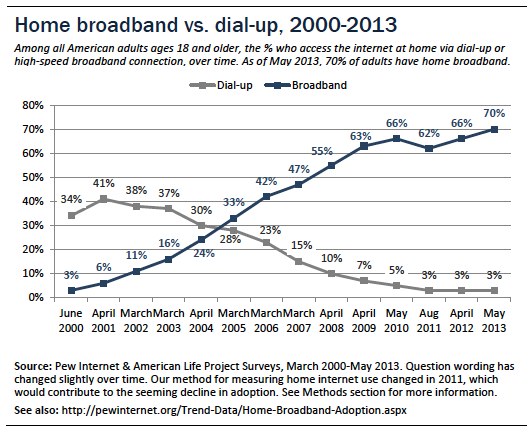Dial-up Internet access is a form of Internet access that uses the facilities of the public switched telephone network (PSTN) to establish a dialed connection to an Internet service provider (ISP) via telephone lines. The user's computer or router uses an attached modem to encode and decode Internet Protocol packets and control information into and from analogue audio frequency signals, respectively. This process is known as a handshake. Remember hearing this when connecting to the internet?

Dial-up connections to the Internet require no infrastructure other than the telephone network and the modems and servers needed to make and answer the calls. Where telephone access is widely available, dial-up remains useful and it is often the only choice available for rural or remote areas, where broadband installations are not prevalent due to low population density and high infrastructure cost. Dial-up access may also be an alternative for users on limited budgets, as it is offered free by some ISPs, though broadband is increasingly available at lower prices in many countries due to market competition.

This is an active modem
Dial-up requires time to establish a telephone connection (up to several seconds, depending on the location) and perform configuration for protocol synchronization before data transfers can take place. In locales with telephone connection charges, each connection incurs an incremental cost. If calls are time-metered, the duration of the connection incurs costs.

Dial-up access is a transient connection, because either the user, ISP or phone company terminates the connection. Internet service providers will often set a limit on connection durations to allow sharing of resources, and will disconnect the user—requiring reconnection and the costs and delays associated with it. Technically inclined users often find a way to disable the auto-disconnect program such that they can remain connected for days.

A 2008 Pew Internet and American Life Project study states that only 10% of US adults still used dial-up Internet access. Reasons for retaining dial-up access include lack of infrastructure and high broadband prices. According to the FCC, 6% used dial-up in 2010. By 2013, that number had fallen to 3%.

Please check (but do not share) your solutions here:

First to Solve: "geoscoobs" on 6/3/'14
FTF: "geoscoobs" on 6/8/'14